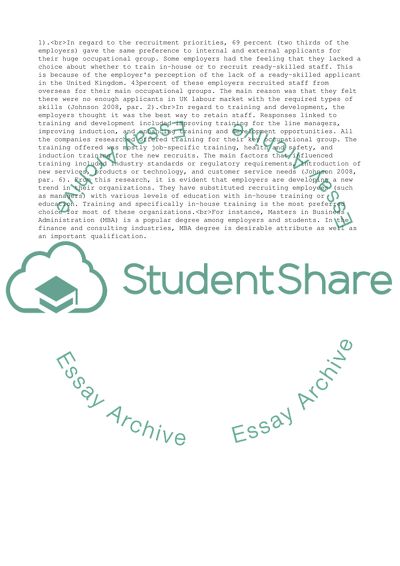Cite this document
(Currently there is a growing trend amongst employers to prefer Essay, n.d.)
Currently there is a growing trend amongst employers to prefer Essay. https://studentshare.org/management/1760799-currently-there-is-a-growing-trend-amongst-employers-to-prefer-in-house-education-according-to-their-organisational-values-and-standards-in-preference-to-recruiting-managers-with-degrees-from-conventional-university-sources-comment-on-the-value
Currently there is a growing trend amongst employers to prefer Essay. https://studentshare.org/management/1760799-currently-there-is-a-growing-trend-amongst-employers-to-prefer-in-house-education-according-to-their-organisational-values-and-standards-in-preference-to-recruiting-managers-with-degrees-from-conventional-university-sources-comment-on-the-value
(Currently There Is a Growing Trend Amongst Employers to Prefer Essay)
Currently There Is a Growing Trend Amongst Employers to Prefer Essay. https://studentshare.org/management/1760799-currently-there-is-a-growing-trend-amongst-employers-to-prefer-in-house-education-according-to-their-organisational-values-and-standards-in-preference-to-recruiting-managers-with-degrees-from-conventional-university-sources-comment-on-the-value.
Currently There Is a Growing Trend Amongst Employers to Prefer Essay. https://studentshare.org/management/1760799-currently-there-is-a-growing-trend-amongst-employers-to-prefer-in-house-education-according-to-their-organisational-values-and-standards-in-preference-to-recruiting-managers-with-degrees-from-conventional-university-sources-comment-on-the-value.
“Currently There Is a Growing Trend Amongst Employers to Prefer Essay”. https://studentshare.org/management/1760799-currently-there-is-a-growing-trend-amongst-employers-to-prefer-in-house-education-according-to-their-organisational-values-and-standards-in-preference-to-recruiting-managers-with-degrees-from-conventional-university-sources-comment-on-the-value.


